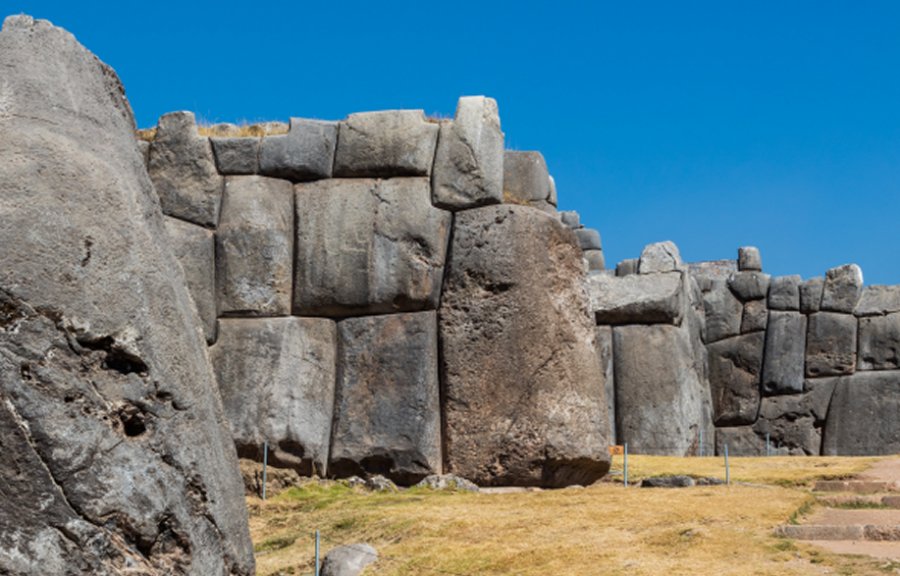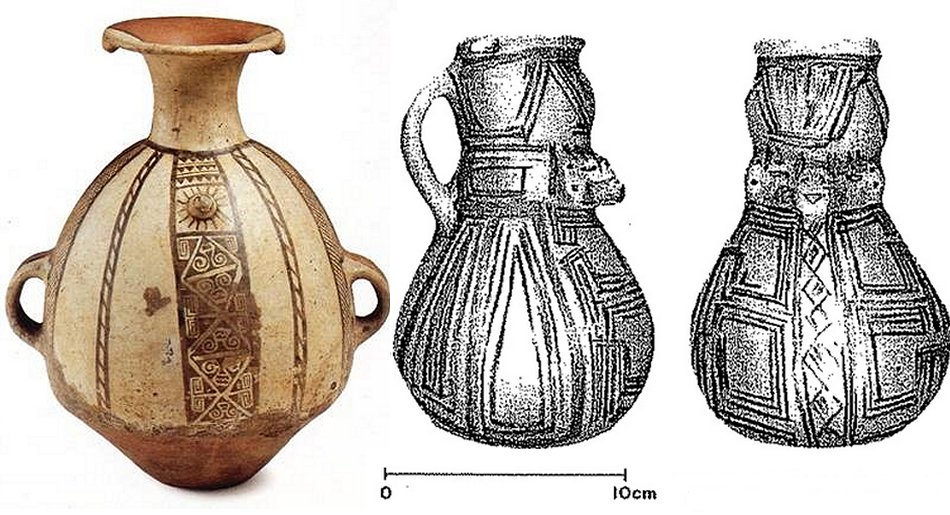Mysterious Killke Culture Of Peru: Did They Construct Sacsayhuaman?
A. Sutherland - AncientPages.com - Officially, the Killke culture (900 to 1200 AD) is credited for building Sacsayhuamán. However, Sacsayhuaman may still be hundreds or even thousands of years older than the Killke culture.
These people occupied the South American region around Cusco, Peru before the arrival of the Incas in the 13th century.
View of a row of corners of the walls of Saksaywaman, a citadel on the northern outskirts of the city of Cusco, the historic capital of the Inca Empire, today Peru. The first sections of the citadel were first built by the Killke culture about 1100 and expanded by the Inca from the 13th century. The dry stone walls are composed of huge stones, which boulders are carefully cut by workers to fit them together extremely tightly without mortar. Image Diego Delso - CC BY-SA 4.0
The Killke culture flourished during the Late Intermediate Period (approximately 1000 to 1470 AD) in what is now Cuzco, Peru.
It was Peru’s historical period characterized by crafts production, in which the Killke used semiprecious stones like turquoise and emeralds as well as wood, textiles, seashells. Their pottery also attested to their skills.
The pottery of the Killke people was often spherical with vertical strap handles and linear geometric decorations of black or black-on-red over a white or buff slip.
The Killke Culture And The Early Inca
The Killke people were skilled craftsmen. They built much of Cuzco that later became the capital of the powerful Inca empire. They are considered to be the so-called ‘early Inca’.
Left: Killke pottery style, found in Cuzco. Source; Right: Killke pottery examples (Bauer and Stanish 1990). Image source
Unfortunately very little is known about this period of time because neither the Killke people nor the Inca left any writings behind (they only had their famous ‘quipu’ records).
It is known, however, that many Killke settlements were later reused and further rebuilt by the Inca who arrived in the region.
Was Sacsayhuaman Constructed By Killke People?
They built the massive fortress, Sacsayhuamán, during the 12th century. Later, the fortress was used by the Inca, following their occupation of the region.
Could the Killke builders' skills be high enough to construct something such extraordinary as the massive fortress, Sacsayhuaman, which is officially dated to the 12th century?
Sacsayhuaman, located just outside of Cuzco, was a fortress of massive carved blocks of rock that fit flawlessly together. Researchers suggest that the original structure was built in the 1100s, which means three centuries earlier than Machu Picchu, by the Killke culture. They also believe that the Incas later made additions and suitable improvements to the original structures.
What remains today are mysterious long lines of rock, still at an unimaginable size for building. The stones are so huge that each one weighs about 107 metric tons.
Three gigantic, 1,500 feet long and 54 feet wide walls were erected near the city of Cuzco, Peru, at an altitude of over 3600 m (12,000 feet). The walls surround a paved area containing a circular stone structure that could be a solar calendar and other structures both on the surface and underground.
The structure was later used by the Inca, following their occupation of the region. It had both military and religious significance.
The 2007 – 2008 excavations uncovered a temple on the edge of the fortress, indicating religious as well as military use of the facility, and the ruins of two temples within the area of Sacsayhuamán, irrigation systems, and a roadway.
Sacsayhuaman Puzzle Is Far From Solved
“One problem we have with the archaeological record is that they seem to have a preconceived notion that the earliest culture in the Cuzco area, prior to the Inca, was the Killke. 2
The Killke occupied the region from 900 to 1200, prior to the arrival of the Inca. Carbon 14 dating of Sacsayhuamán, had demonstrated that the Killke culture constructed the fortress about 1100 AD. The Inca later expanded and occupied the complex in the 13th century and after.
Killke ceramics first were studied and described by John H. Rowe, (1918 - 2004), an American archaeologist and anthropologist, known for his extensive research on Peru, which focused especially on the Inca civilization. Rowe named the Killke culture while he studied Andean antiquity. However, he "incorrectly identified them as "early Inca". These vessels often are globular with vertical strap handles and have simple linear geometric decorations of black or black-on-red over a white or buff slip. 1
However, if the excavations were to proceed much deeper, evidence of earlier cultures could be present, says Brien Foerster in his book “Lost Ancient Technology Of Peru And Bolivia”.
Also, we have to remember what D. H. Childress wrote in his book “Ancient Technology in Peru and Bolivia”
“Sacsayhuaman may still be hundreds or even thousands of years older than the Killke culture. There seems to be no reason why building in the Cuzco and Sacsayhuaman area would have only begun in 1100 AD when the megalithic building had begun much earlier in other areas…” 3
Written by – A. Sutherland - AncientPages.com Senior Staff Writer
Copyright © AncientPages.com All rights reserved. This material may not be published, broadcast, rewritten or redistributed in whole or part without the express written permission of AncientPages.com
Expand for referencesReferences:
Project Gutenberg
D. H. Childress wrote in his book “Ancient Technology in Peru and Bolivia”
Brien Foerster, Lost Ancient Technology Of Peru And Bolivia
More From Ancient Pages
-
 Hades – Land Of The Dead In Greek Beliefs Offered Punishment And Paradise Full Of Harmony
Featured Stories | Aug 15, 2019
Hades – Land Of The Dead In Greek Beliefs Offered Punishment And Paradise Full Of Harmony
Featured Stories | Aug 15, 2019 -
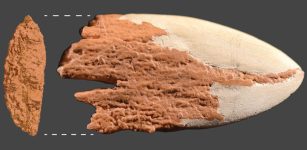 Evidence Oldest Bone Spear Point In The Americas Is 13,900 Years Old
Archaeology | Feb 3, 2023
Evidence Oldest Bone Spear Point In The Americas Is 13,900 Years Old
Archaeology | Feb 3, 2023 -
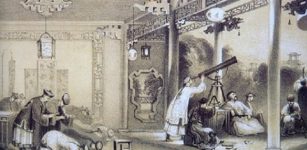 On This Day In History: Sunspot Observed By Chinese Astronomers During The Han Dynasty – On May 10, 28 BC
News | May 10, 2016
On This Day In History: Sunspot Observed By Chinese Astronomers During The Han Dynasty – On May 10, 28 BC
News | May 10, 2016 -
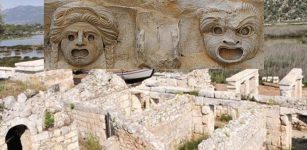 Ancient City Was Discovered Underground In Antalya’s Demre District
Archaeology | Nov 26, 2019
Ancient City Was Discovered Underground In Antalya’s Demre District
Archaeology | Nov 26, 2019 -
 The Egyptian Dream Book Reveals Ancient Predictions Of The Future
Egyptian Mythology | Jun 6, 2020
The Egyptian Dream Book Reveals Ancient Predictions Of The Future
Egyptian Mythology | Jun 6, 2020 -
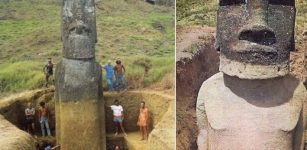 Easter Island’s Statues Reveal Bodies Covered With Unknown Ancient Petroglyphs
Archaeology | Jan 21, 2014
Easter Island’s Statues Reveal Bodies Covered With Unknown Ancient Petroglyphs
Archaeology | Jan 21, 2014 -
 Mysterious Handprint And Cry For Justice From Beyond The Grave
Featured Stories | Jan 2, 2020
Mysterious Handprint And Cry For Justice From Beyond The Grave
Featured Stories | Jan 2, 2020 -
 Norse God Tyr Who Gave Viking Warriors Courage And Self-Confidence In Battle
Featured Stories | Mar 7, 2018
Norse God Tyr Who Gave Viking Warriors Courage And Self-Confidence In Battle
Featured Stories | Mar 7, 2018 -
 Were Mysterious Giant Ancient Mustatils In Saudi Arabia Used For Ritual Purposes?
Archaeology | Mar 16, 2023
Were Mysterious Giant Ancient Mustatils In Saudi Arabia Used For Ritual Purposes?
Archaeology | Mar 16, 2023 -
 Ingenious Paleolithic 3D Map Was Discovered In The Ségognole 3 Cave South Of Paris, France
Archaeology | Jan 15, 2025
Ingenious Paleolithic 3D Map Was Discovered In The Ségognole 3 Cave South Of Paris, France
Archaeology | Jan 15, 2025 -
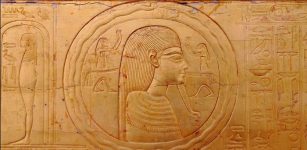 Ouroboros: Ancient Infinity Symbol Used By Different Ancient Civilizations
Ancient Symbols | Oct 3, 2017
Ouroboros: Ancient Infinity Symbol Used By Different Ancient Civilizations
Ancient Symbols | Oct 3, 2017 -
 Ancient Cranial Modification In Peru Led To Social Inequality
Archaeology | Jan 24, 2018
Ancient Cranial Modification In Peru Led To Social Inequality
Archaeology | Jan 24, 2018 -
 Maya Storm God Huracán Taught That When We Damage Nature, We Damage Ourselves
Featured Stories | Oct 4, 2024
Maya Storm God Huracán Taught That When We Damage Nature, We Damage Ourselves
Featured Stories | Oct 4, 2024 -
 Amazing World’s Largest Mosaic Piece Made By 13 Different Ancient Civilizations At Museum Hotel Antakya
Featured Stories | May 9, 2019
Amazing World’s Largest Mosaic Piece Made By 13 Different Ancient Civilizations At Museum Hotel Antakya
Featured Stories | May 9, 2019 -
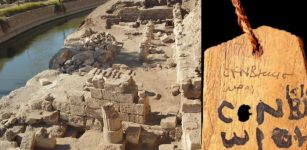 Ancient Egyptian Temple, 30 Mummy Cards, 85 Tombs And Surveillance Points From The Era Of Ptolemy IIIs Discovered In Sohag
Archaeology | May 5, 2022
Ancient Egyptian Temple, 30 Mummy Cards, 85 Tombs And Surveillance Points From The Era Of Ptolemy IIIs Discovered In Sohag
Archaeology | May 5, 2022 -
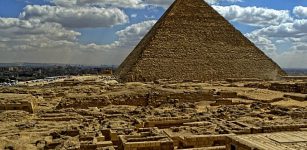 Secrets Of Cheops’ Pyramid: Does The Newly Found Chamber Contain An Iron Throne?
Archaeology | Jan 13, 2018
Secrets Of Cheops’ Pyramid: Does The Newly Found Chamber Contain An Iron Throne?
Archaeology | Jan 13, 2018 -
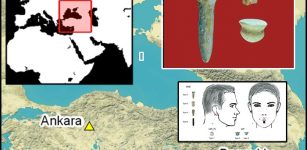 Evidence Of Stone Age Ear and Lip Piercing Found At Boncuklu Tarla Neolithic Site In Türkiye
Archaeology | Mar 14, 2024
Evidence Of Stone Age Ear and Lip Piercing Found At Boncuklu Tarla Neolithic Site In Türkiye
Archaeology | Mar 14, 2024 -
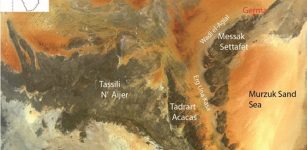 Ancient Society In The Sahara Desert Rose And Fell With Groundwater – Study
Archaeology | Oct 15, 2023
Ancient Society In The Sahara Desert Rose And Fell With Groundwater – Study
Archaeology | Oct 15, 2023 -
 Mystery Of The Lost Underground City Of The Grand Canyon
Featured Stories | Nov 19, 2014
Mystery Of The Lost Underground City Of The Grand Canyon
Featured Stories | Nov 19, 2014 -
 1,600-year-old Roman mosaics from ancient Serdica discovered in Sofia, Bulgaria
Artifacts | Aug 30, 2015
1,600-year-old Roman mosaics from ancient Serdica discovered in Sofia, Bulgaria
Artifacts | Aug 30, 2015

